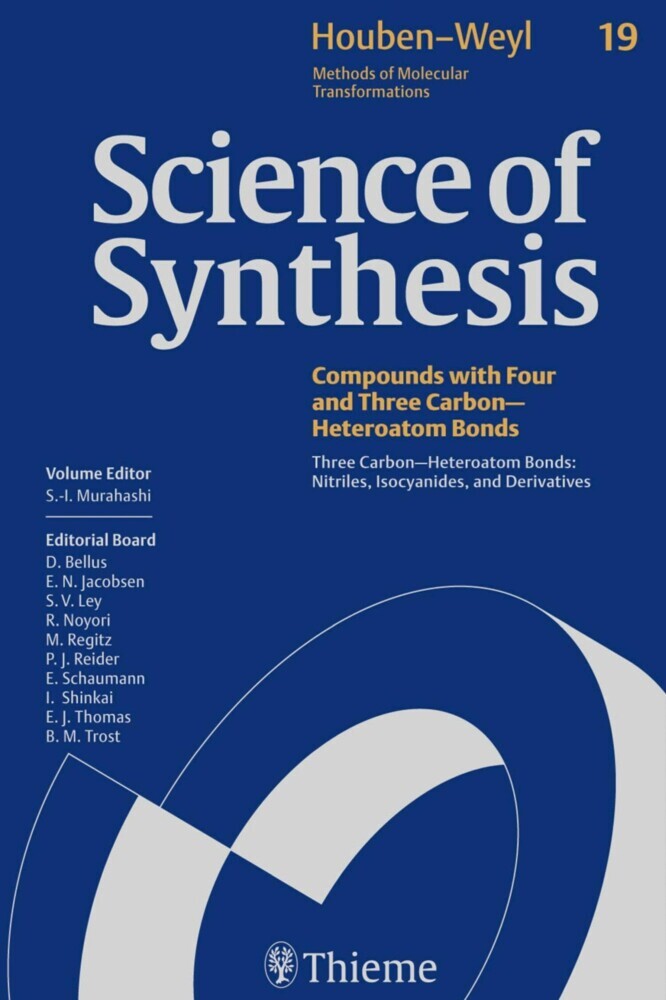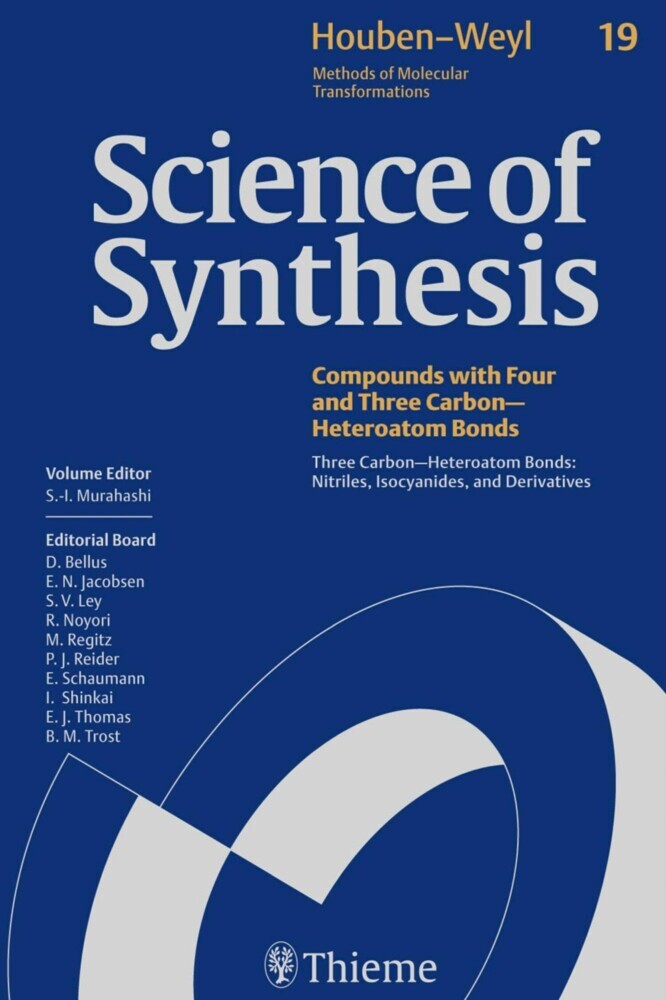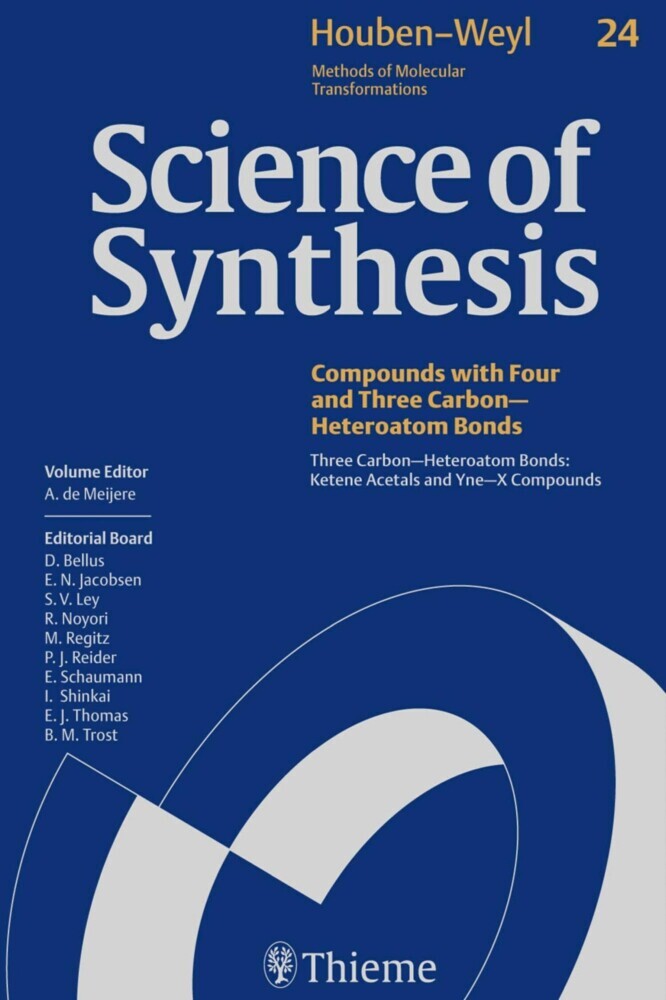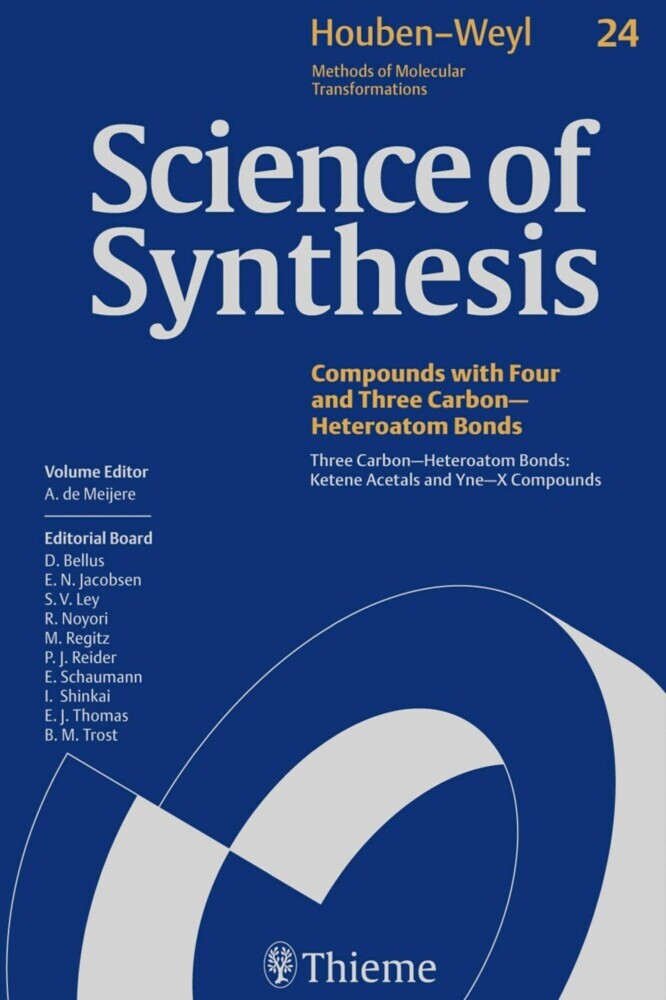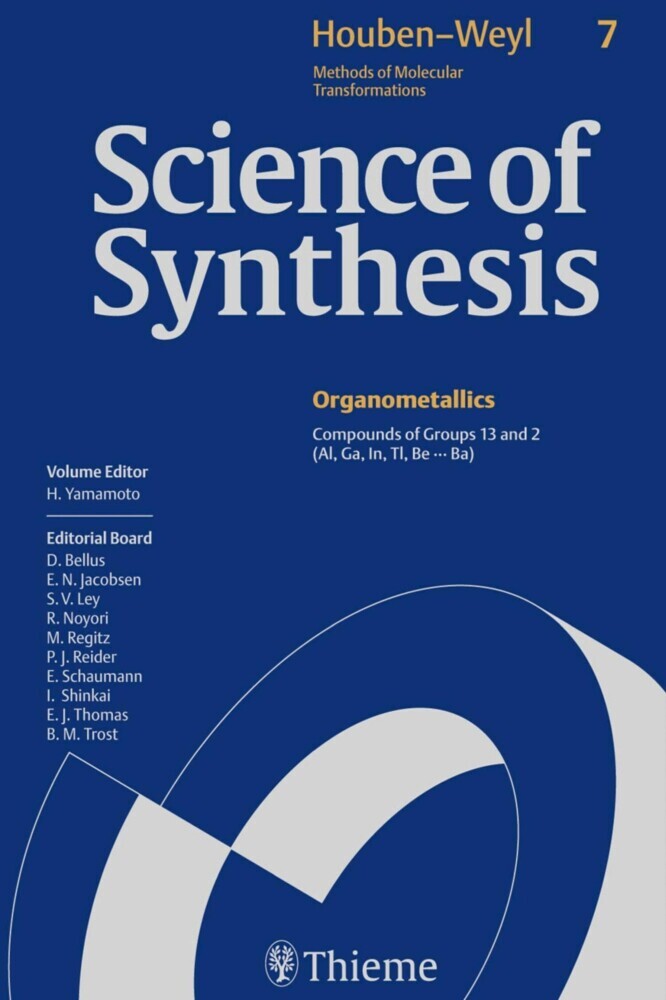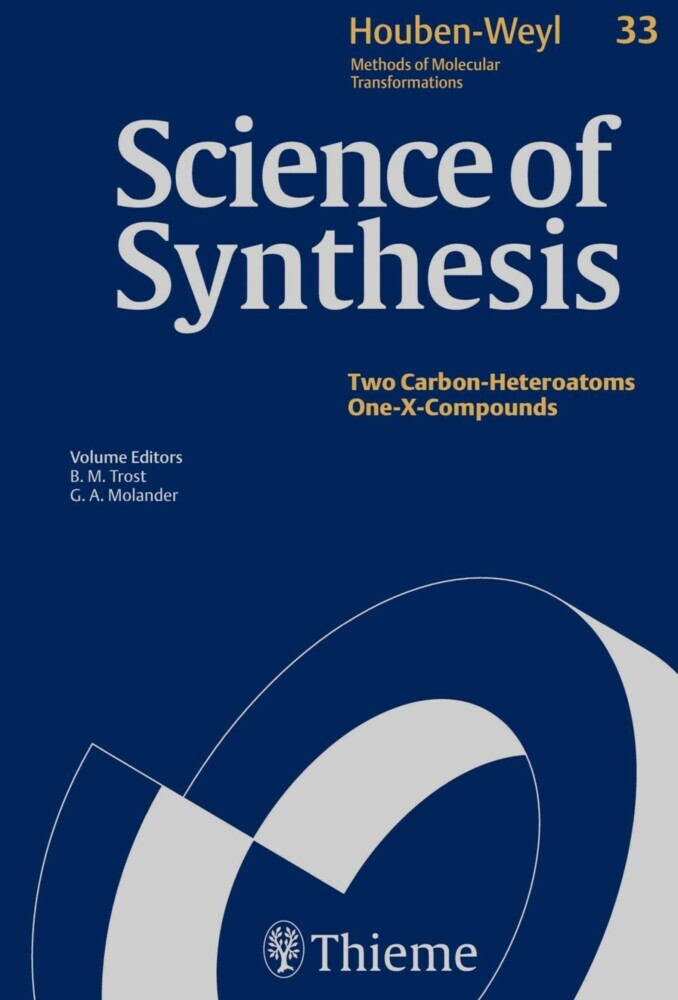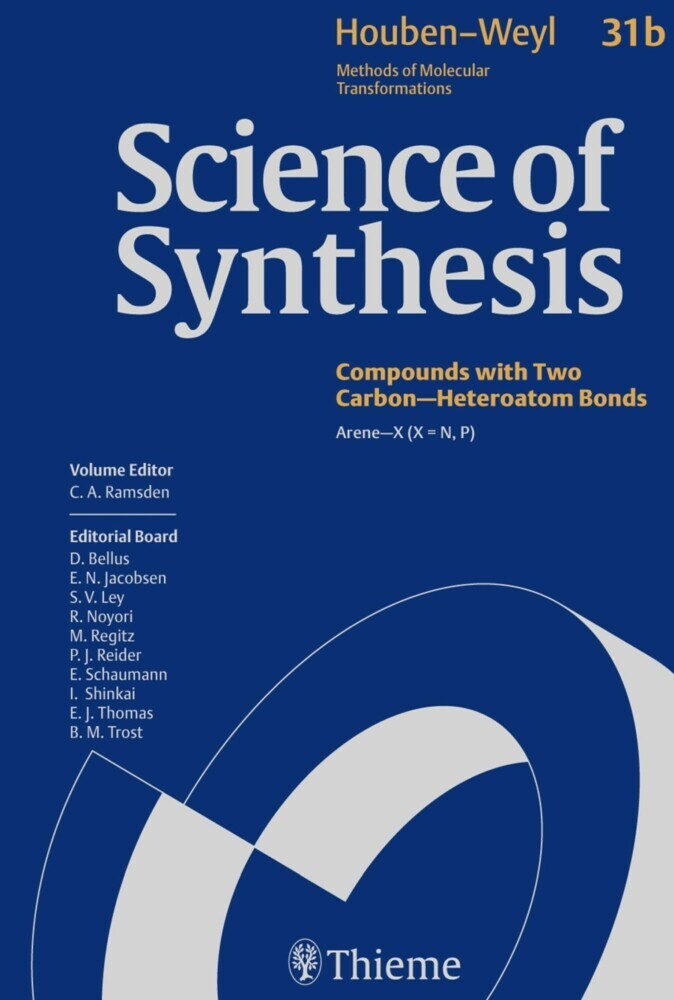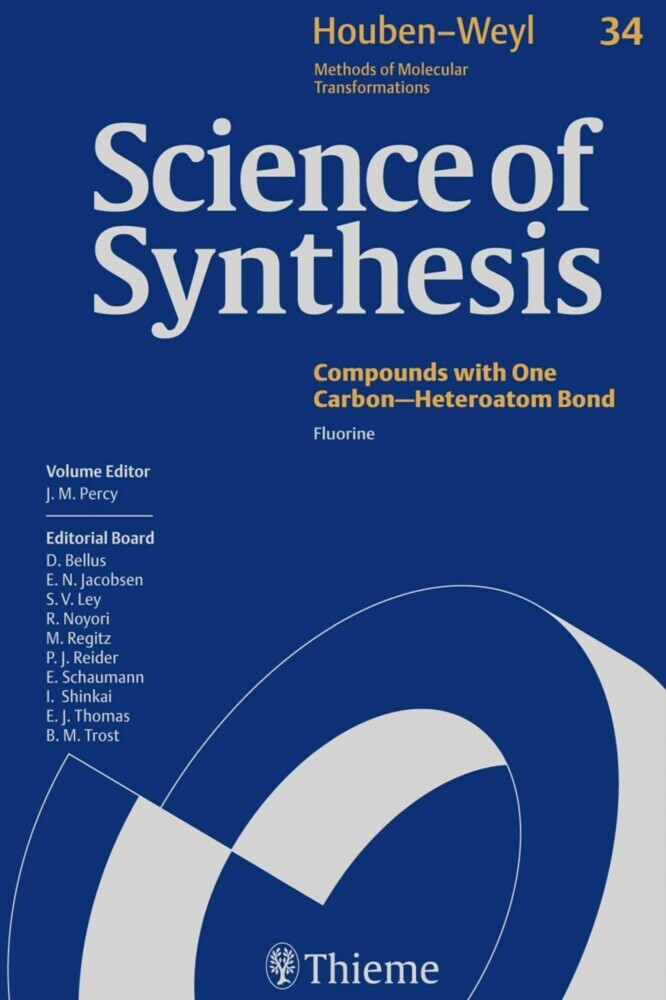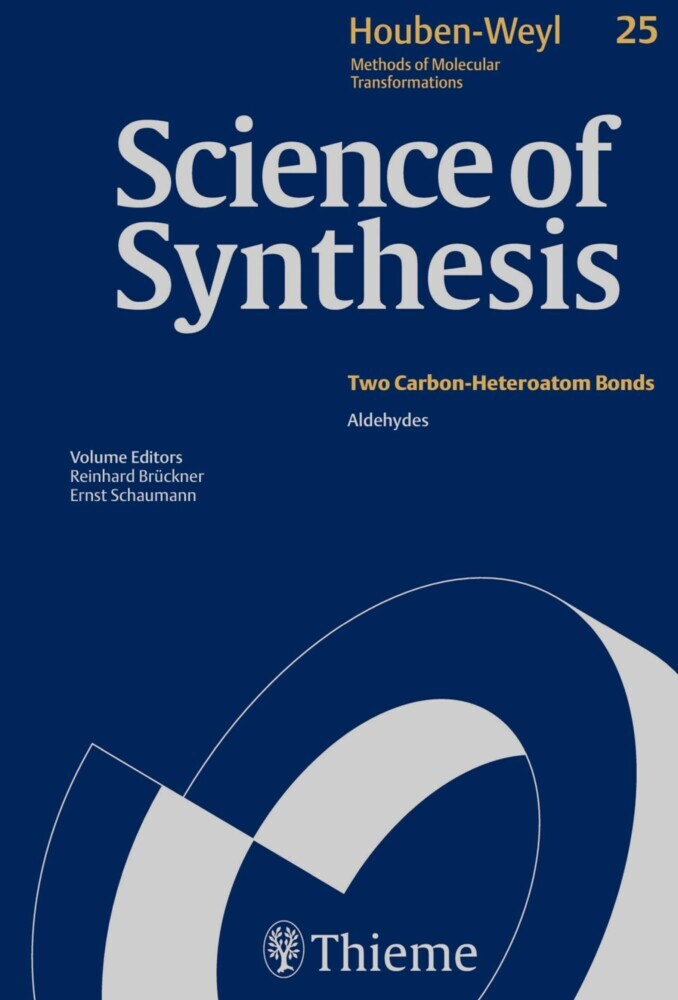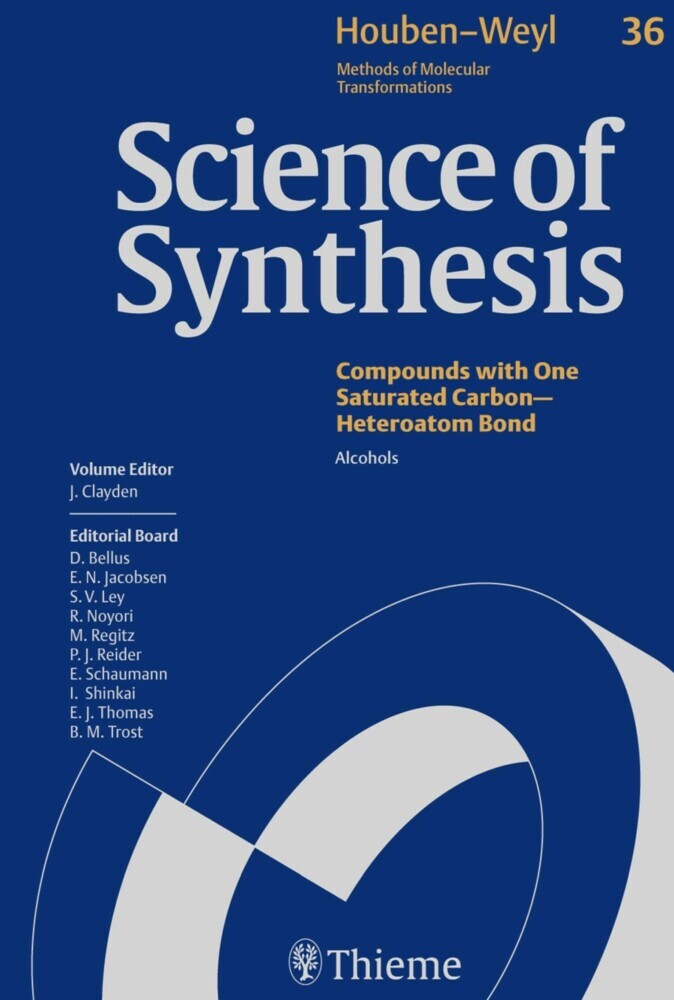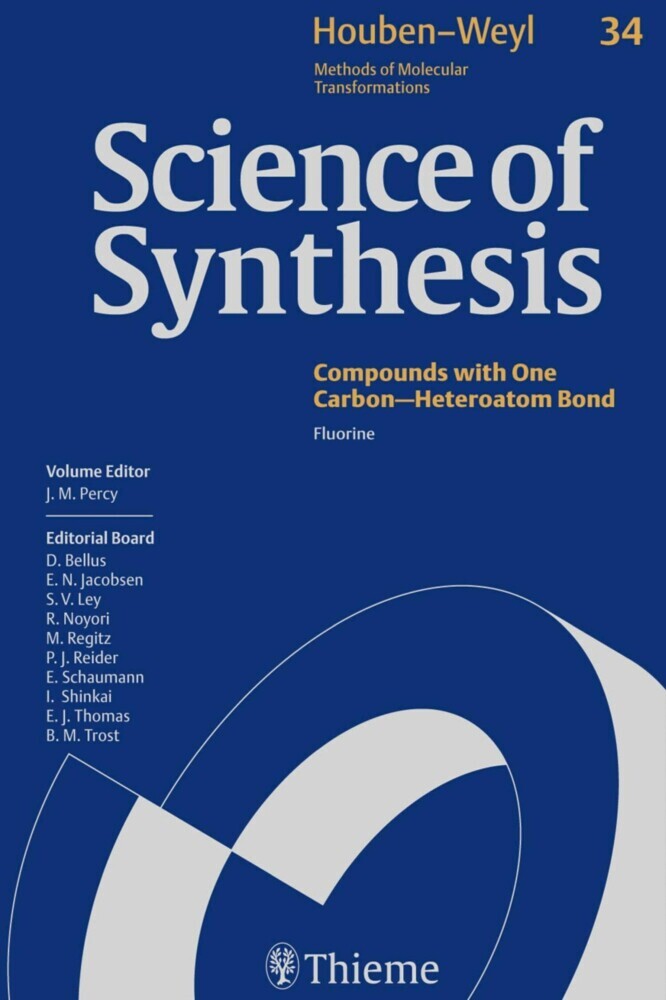Science of Synthesis: Houben-Weyl Methods of Molecular Transformations Vol. 19. Vol.19
Science of Synthesis: Houben-Weyl Methods of Molecular Transformations Vol. 19. Vol.19
Science of Synthesis: Houben-Weyl Methods of Molecular Transformations is the entirely new edition of the acclaimed reference series Houben-Weyl, the standard synthetic chemistry resource since 1909. This new edition is published in English and will comprise 48 volumes published between the years 2000 and 2008.
Science of Synthesis is a quality reference work developed by a highly esteemed editorial board to provide a comprehensive and critical selection of reliable organic and organometallic synthetic methods. This unique resource is designed to be the first point of reference when searching for a synthesis strategy.
- Contains the expertise of presently 400 leading chemists worldwide.
- Critically evaluates the preparative applicability and significance of the synthetic methods.
- Discusses relevant background information and provides detailed experimental procedures
For full information on the Science of Synthesis series, visit the Science of Synthesis Homepage
Series Editors: D. Bellus, S. V. Ley, R. Noyori, M. Regitz, E. Schaumann, I. Shinkai, E. J. Thomas, B. M. Trost, P. J. Reider
Shun-Ichi Murahashi
1;Science of Synthesis - Volume 19: Three Carbon--Heteroatom Bonds: Nitriles, Isocyanides, and Derivatives;1 1.1;Title page;3 1.2;Imprint;5 1.3;Preface;6 1.4;Overview;8 1.5;Table of Contents;10 1.6;Introduction;22 1.7;19.1 Product Class 1: Nitrile Oxides, Sulfides, and Selenides;38 1.7.1;19.1.1 Product Subclass 1: Nitrile Oxides;38 1.7.1.1;19.1.1.1 Synthesis of Product Subclass 1;40 1.7.1.1.1;19.1.1.1.1 Method 1: Dehydrohalogenation of Hydroximoyl Halides;40 1.7.1.1.2;19.1.1.1.2 Method 2: Dehydration of Activated Nitroalkanes and Nitroalkenes;43 1.7.1.1.3;19.1.1.1.3 Method 3: Halogenation/Dehydrohalogenation of Aldoximes;45 1.7.1.1.4;19.1.1.1.4 Method 4: Dehydration of Nitroalkanes (The Mukaiyama Reaction);46 1.7.1.1.5;19.1.1.1.5 Method 5: Oxidation of Aldoximes;49 1.7.1.1.6;19.1.1.1.6 Method 6: Thermolysis of 1,2,5-Oxadiazole 2-Oxides (Furoxans);52 1.7.1.1.7;19.1.1.1.7 Methods 7: Miscellaneous Methods;52 1.7.2;19.1.2 Product Subclass 2: Nitrile Sulfides;55 1.7.2.1;19.1.2.1 Synthesis of Product Subclass 2;55 1.7.2.1.1;19.1.2.1.1 Method 1: Thermolysis of 1,3,4-Oxathiazol-2-ones;55 1.7.2.1.1.1;19.1.2.1.1.1 Variation 1: Thermolysis of 1,3,4-Oxathiazoles;57 1.7.3;19.1.3 Product Subclass 3: Nitrile Selenides;58 1.8;19.2 Product Class 2: Nitrile Imines;62 1.8.1;19.2.1 Synthesis of Product Class 2;62 1.8.1.1;19.2.1.1 Method 1: Dehydrohalogenation of Hydrazonoyl Halides;62 1.8.1.2;19.2.1.2 Method 2: Oxidation of Hydrazones;67 1.8.1.3;19.2.1.3 Methods 3: Miscellaneous Methods;69 1.8.1.3.1;19.2.1.3.1 Variation 1: From a Lithiated Diazomethane;69 1.8.1.3.2;19.2.1.3.2 Variation 2: Thermolysis or Photolysis of Heterocycles;70 1.9;19.3 Product Class 3: Nitrilium Salts;74 1.9.1;19.3.1 Synthesis of Product Class 3;74 1.9.1.1;19.3.1.1 Method 1: Dehydration of Oximes;74 1.9.1.2;19.3.1.2 Method 2: N-Alkylation of Nitriles;76 1.9.1.3;19.3.1.3 Method 3: Generation of Nitrilium Salts in Ring-Closure and Rearrangement Reactions Leading to Heterocycles;80 1.9.1.4;19.3.1.4 Method 4: Synthesis from Triazenyl Chlorides and Dialkylcyanamides;84 1.10;19.4 Product Class 4: Nitrile Ylides;88 1.10.1;19.4.1 Synthesis of Product Class 4;88 1.10.1.1;19.4.1.1 Method 1: Dehydrochlorination of Imidoyl Chlorides;88 1.10.1.2;19.4.1.2 Method 2: Preparation of Nitrile Ylide Equivalents;92 1.10.1.3;19.4.1.3 Method 3: Reaction of Nitriles with Carbenes;94 1.10.1.4;19.4.1.4 Method 4: Photolysis of Azirines;95 1.10.1.5;19.4.1.5 Methods 5: Miscellaneous Methods;97 1.11;19.5 Product Class 5: Nitriles;100 1.11.1;19.5.1 Construction of the Cyano Group by Functional-Group Transformation from a Nitrogen-Free Starting Material;116 1.11.1.1;19.5.1.1 Transformation of an Aldehyde Group;116 1.11.1.1.1;19.5.1.1.1 Method 1: One-Pot Reactions Involving Intermediate Aldimines;116 1.11.1.1.1.1;19.5.1.1.1.1 Variation 1: By Copper-Catalyzed Oxidation;116 1.11.1.1.1.2;19.5.1.1.1.2 Variation 2: By Nickel-Catalyzed Oxidation;117 1.11.1.1.1.3;19.5.1.1.1.3 Variation 3: By Oxidation with Manganese(IV) Oxide;117 1.11.1.1.1.4;19.5.1.1.1.4 Variation 4: By Oxidation with Ammonium Cerium(IV) Nitrate;118 1.11.1.1.1.5;19.5.1.1.1.5 Variation 5: By Oxidation with Iodine;119 1.11.1.1.1.6;19.5.1.1.1.6 Variation 6: By Oxidation with Hydrogen Peroxide;119 1.11.1.1.2;19.5.1.1.2 Method 2: Reactions Involving Intermediate Oximes;120 1.11.1.1.2.1;19.5.1.1.2.1 Variation 1: Using Boron Trifluoride--Diethyl Ether Complex;120 1.11.1.1.2.2;19.5.1.1.2.2 Variation 2: Using 4-Toluenesulfonic Acid;121 1.11.1.1.2.3;19.5.1.1.2.3 Variation 3: Using Acetic Anhydride;121 1.11.1.1.2.4;19.5.1.1.2.4 Variation 4: Using Phthalic Anhydride;121 1.11.1.1.2.5;19.5.1.1.2.5 Variation 5: Using 1-Methylpyrrolidin-2-one;122 1.11.1.1.2.6;19.5.1.1.2.6 Variation 6: Using Pyridine/Formamide;122 1.11.1.1.2.7;19.5.1.1.2.7 Variation 7: Using Sodium Iodide;123 1.11.1.1.2.8;19.5.1.1.2.8 Variation 8: By Dehydration with Triphosgene;123 1.11.1.1.2.9;19.5.1.1.2.9 Variation 9: By Treatment with Ir
Bellus, Daniel
Murahashi, Shun-Ichi
| ISBN | 9783131719218 |
|---|---|
| Artikelnummer | 9783131719218 |
| Medientyp | E-Book - PDF |
| Copyrightjahr | 2014 |
| Verlag | Georg Thieme Verlag KG |
| Umfang | 615 Seiten |
| Sprache | Englisch |
| Kopierschutz | Digitales Wasserzeichen |

